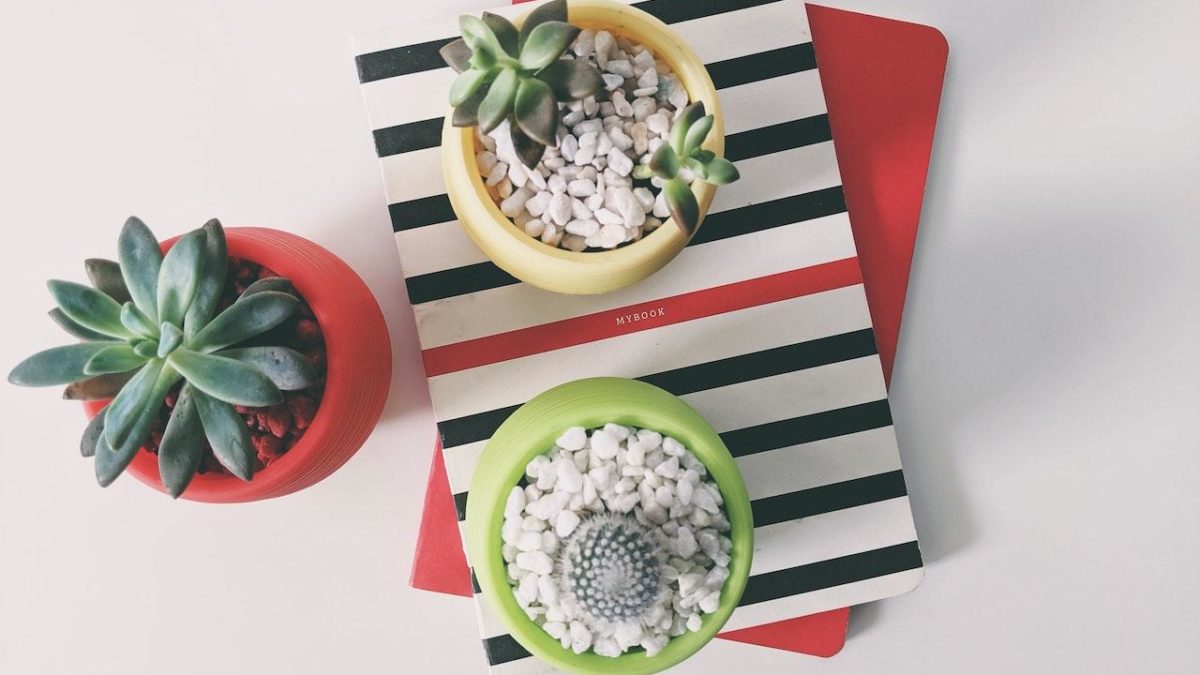Spiky houseplants are a great way to add some life to your home without having to worry about them dying in harsh conditions. These plants are resilient and can survive in a variety of environments, making them perfect for anyone who wants to spruce up their home without having to put in a lot of effort.
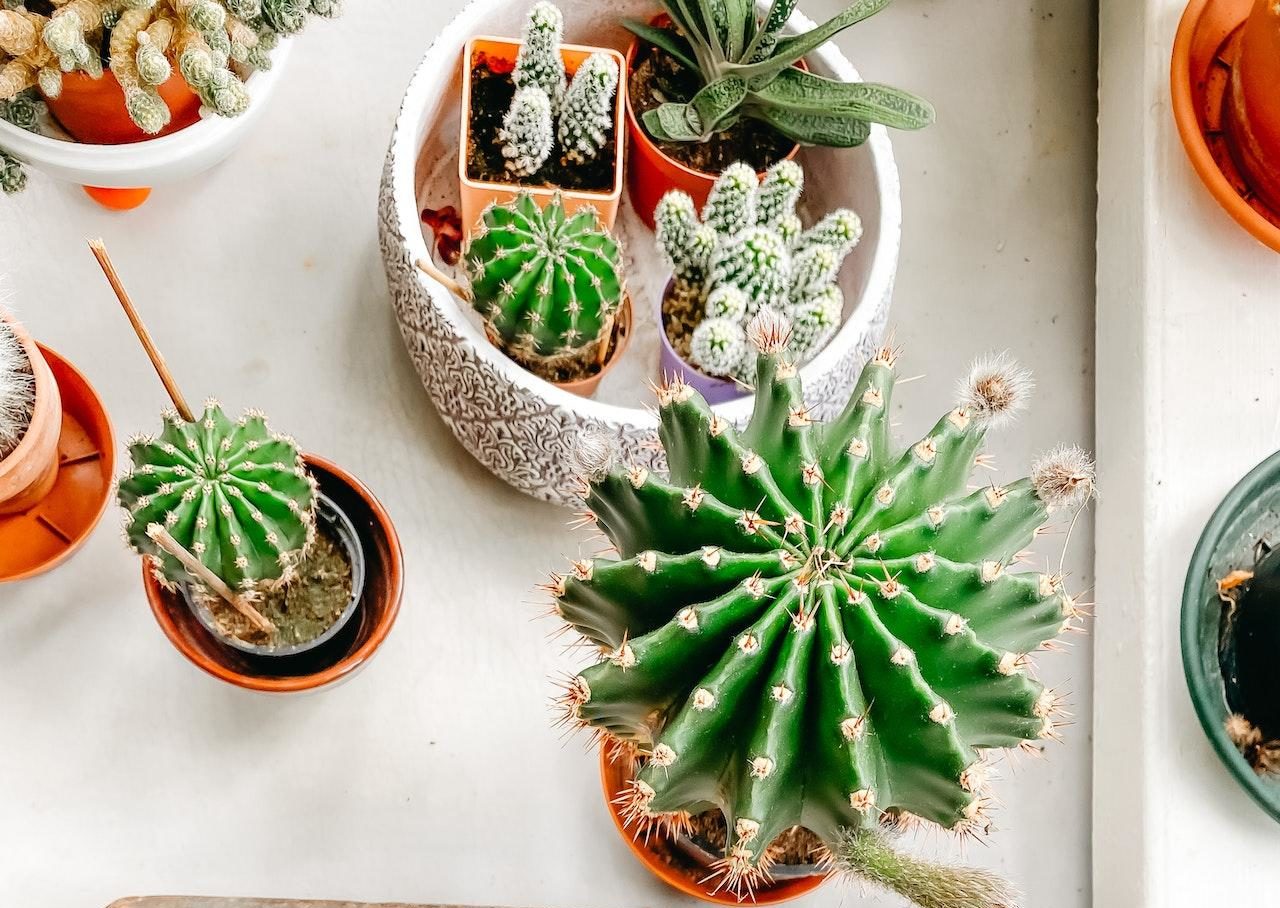
Credit: Pexels
There are a variety of spiky houseplants to choose from, so you can find one that fits your style and needs. If you’re looking for a plant that can tolerate low light and little water, then cactus is a good option.
If you want a plant that is easy to care for and doesn’t require much attention, then succulents are a good choice. And if you’re looking for a plant that is both decorative and functional, then Aloe vera is a great option.
Check out the history, benefits, and other types of resilient houseplants below.
The History Of Spiky Indoor Plants
The history of spiky indoor plants is a long and varied one. These plants have been around for centuries and have been used for many different purposes. Some of the earliest recorded uses of these plants date back to ancient Egypt, where they were used to decorate tombs and temples. In more recent history, spiky indoor plants have been used as ornamental pieces in homes and gardens.
There are different kinds of spiky indoor plants, and each has its own unique history. Some of the most popular varieties include cacti, agave, and yucca. Cacti are native to the Americas and have been used by native peoples for centuries. Agave is a type of succulent that is native to Mexico and the southwestern United States. Yucca is a type of plant that is native to the Caribbean and parts of Central and South America.
All of these plants have one thing in common: they are all very resilient and can survive in even the harshest conditions. This is one of the reasons they’re so popular as ornamental plants. No matter what kind of climate you live in, these plants will be able to thrive.
If you are looking for a plant that can add some personality to your home or garden, then consider one of the many varieties of spiky indoor plants. These plants have a long and interesting history, and they are sure to add some interest to your space.
The Benefits Of Spiky Indoor Plants
Spiky indoor plants are some of the most resilient plants that you can have in your home. They can survive in the harshest conditions and still thrive.
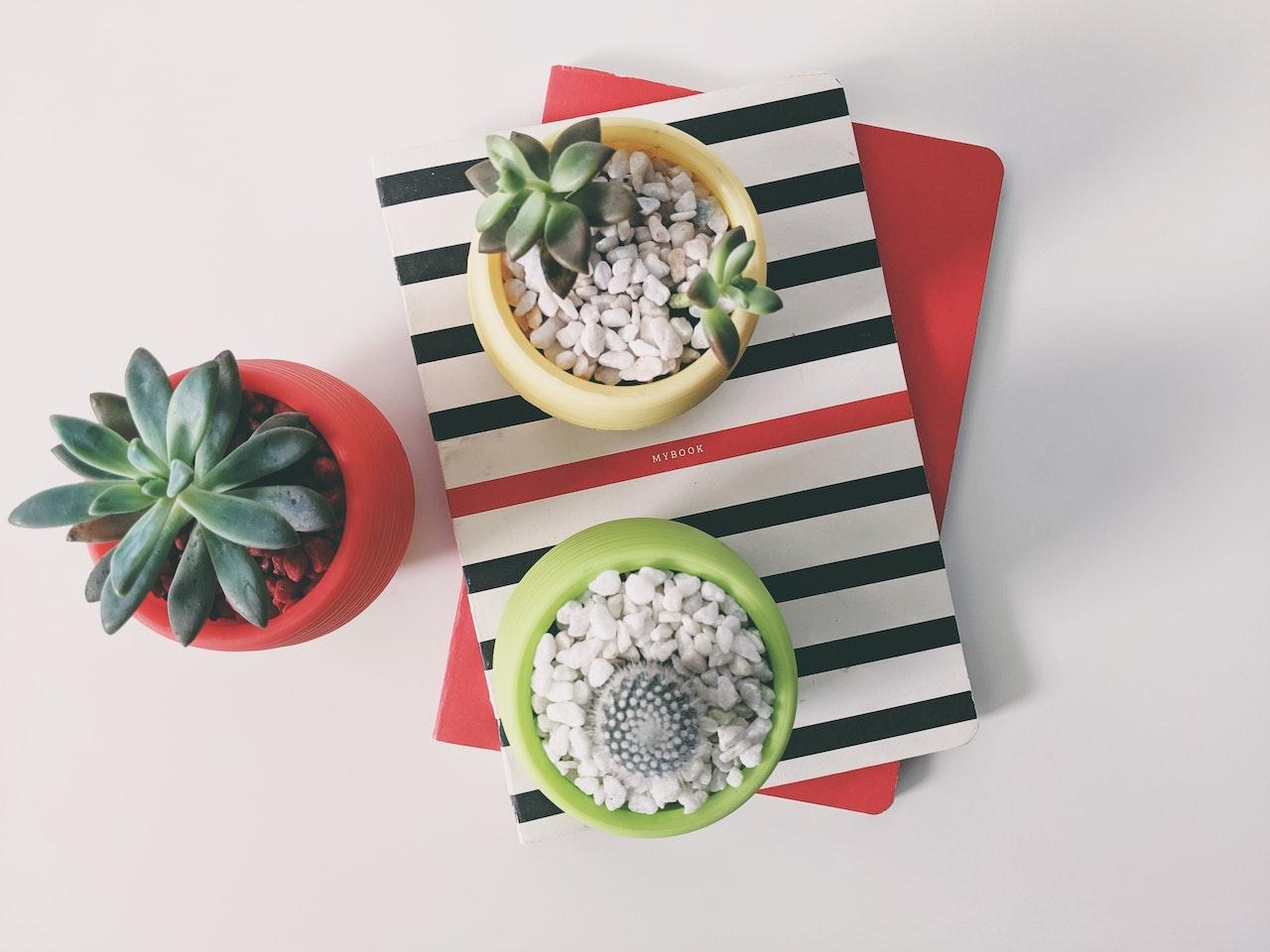
Credit: Pexels
Here are some of the benefits of having spiky indoor plants in your home:
1. They are low maintenance.
Spiky indoor plants are very easy to care for. They don’t require a lot of water or attention. You can just plant them and leave them to grow.
2. They are air purifiers.
Spiky indoor plants help to purify the air in your home. They filter out harmful toxins and pollutants, making the air healthier for you to breathe.
3. Spiky indoor plants are natural humidifiers.
Spiky indoor plants help to increase the humidity in your home. This is especially beneficial in the winter when the air is dryer.
4. They are beautiful.
Spiky plants add a unique and beautiful touch to your home. They come in a variety of colors and shapes, so you can find the perfect one to match your style.
5. They are good for your health.
Studies have shown that having plants in your home can improve your mental and physical health. They can reduce stress, anxiety, and depression. Plants also improve the quality of your sleep and increase your energy levels.
6. Spiky plants can help to reduce stress levels due to their calming effects.
This is especially beneficial if you live a busy lifestyle and need to find ways to relax.
7. Mood boosters
Spiky plants can help to boost your mood. This is because they are known to increase levels of serotonin, which is a feel-good hormone. You’ll benefit from this if you suffer from depression or anxiety.
8. Improves concentration
Spiky plants can help to improve your concentration. This is because they are known to increase levels of dopamine, which is a neurotransmitter that helps with focus and concentration.
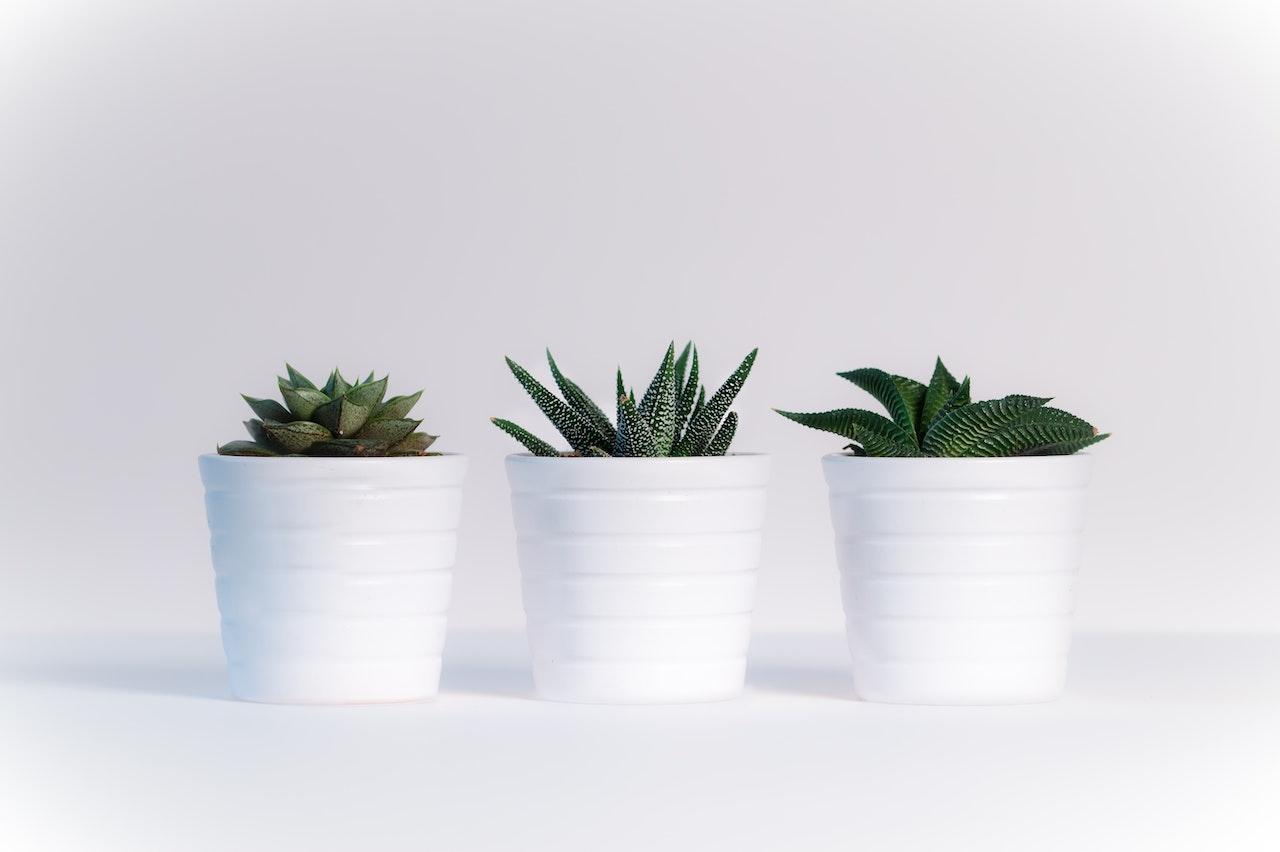
Credit: Pexels
The Best Spiky Indoor Plants For Your Home
1. Ponytail Palm
The ponytail palm is a spiky indoor plant that’s resilient and can survive in even the harshest conditions. It is a native of Mexico and can grow up to 20 feet tall. It has long, thin leaves that are green in color and have a yellow stripe running down the center. The ponytail palm is a very easy plant to care for and does not require much water or sunlight.
2. Snake Plant
The snake plant is a spiky indoor plant that is native to Africa. It can grow up to 4 feet tall and has long, thin leaves that are green in color with white or yellow stripes. The snake plant is very easy to care for and doesn’t require much water or sunlight.
3. Euphorbia
Euphorbia is a spiky indoor plant that is native to Africa and Arabia. It can grow up to 6 feet tall and has long, thin leaves that are green in color with white or yellow stripes.
4. Dracaena
Dracaena is a spiky indoor plant that is native to Africa and Madagascar. It can grow up to 10 feet tall and has long, thin leaves that are green in color with white or yellow stripes.
It’s a good choice for beginners or for someone who doesn’t want to spend a lot of time caring for their plants. Water the Dracaena when the soil is dry to the touch. Place it in a spot with bright, indirect light
5. Aloe Vera
Aloe Vera is a spiky indoor plant that is native to Africa and Arabia. It can grow up to 2 feet tall and has long, thin leaves that are green in color with white or yellow spots. It’s a popular succulent that is often used for its medicinal properties. Aloe vera can tolerate neglect and even thrive in low-light conditions.
6. Cactus
The Cactus is a spiky indoor plant that is native to America. It can grow up to 4 feet tall and has long, thin leaves that are green in color with white or yellow spots.
Cactus is another type of succulent that is popular for indoor plants. They are very easy to care for and only need to be watered every few weeks. Place your cactus in a sunny spot, as they need bright light to thrive. When watering, be sure to let the water soak in completely before watering again.
7. Yucca
Yucca is a spiky indoor plant that is native to America. It can grow up to 6 feet tall and has long, thin leaves that are green in color with white or yellow spots. Yucca is a popular succulent that is often used for its ornamental value. It can also tolerate neglect and thrive in low-light conditions
8. Agave
Agave is a spiky indoor plant that is native to America. It can grow up to 8 feet tall and has long, thin leaves that are green in color with white or yellow spots.
9. Sansevieria
Sansevieria is a spiky indoor plant that’s native to Africa. It can grow up to 6 feet tall and has long, thin leaves that are green in color with white or yellow stripes. Sansevieria is a very easy plant to care for and does not require much water or sunlight.
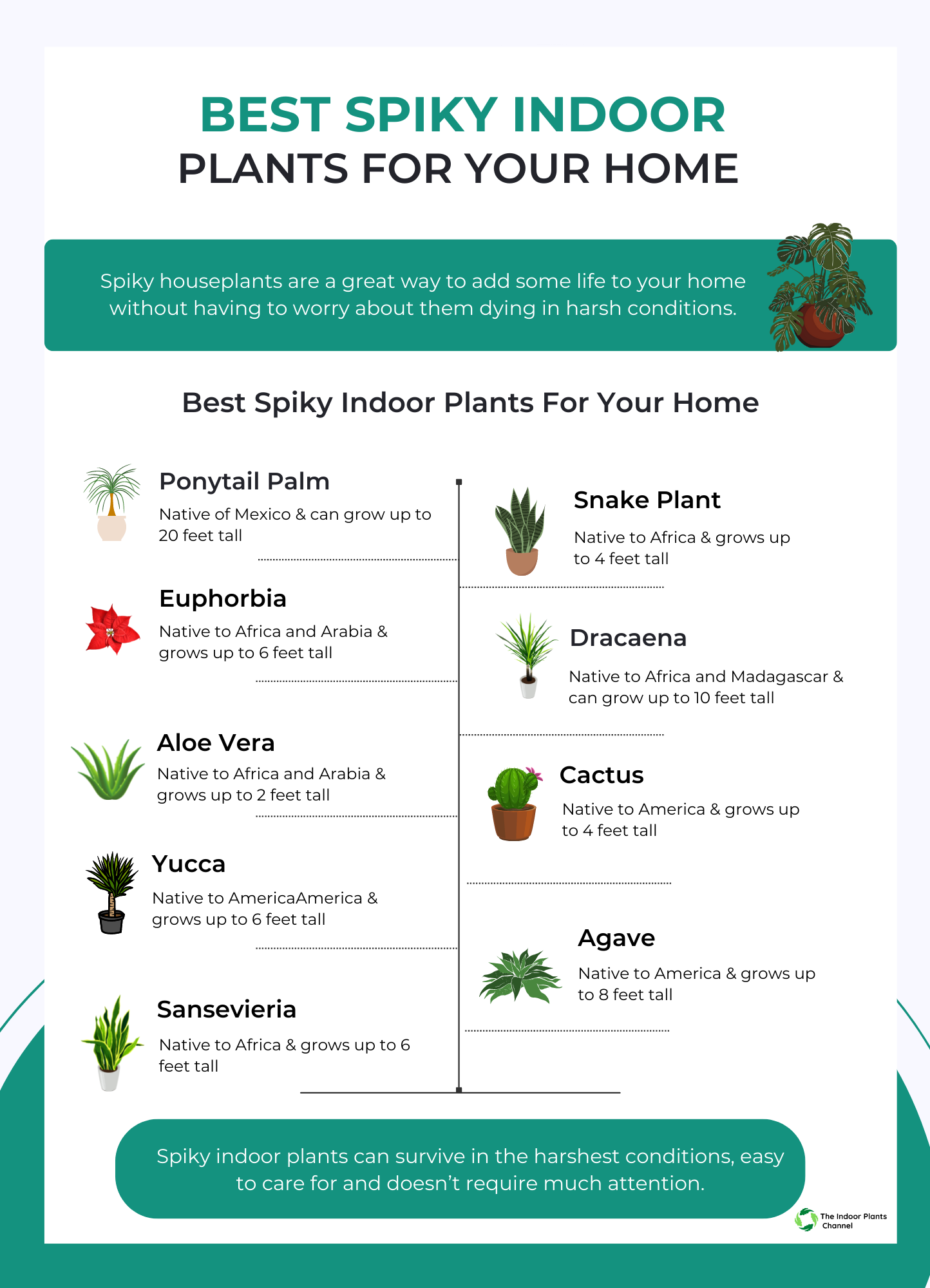
How To Choose The Best Spiky Indoor Plant For Your Home
There are a few things to keep in mind when choosing a spiky indoor plant for your home.
- Consider the light conditions in your home. If you have low light, choose a plant that is tolerant of low light conditions.
- Consider the watering needs of the plant. Some plants need to be watered more frequently than others.
- Check the size of the plant. Some plants can get quite large, so make sure you have enough space for the plant to grow.
- Think about the care needs of the plant. Some plants are easier to care for than others.
How To Care For Spiky Indoor Plants
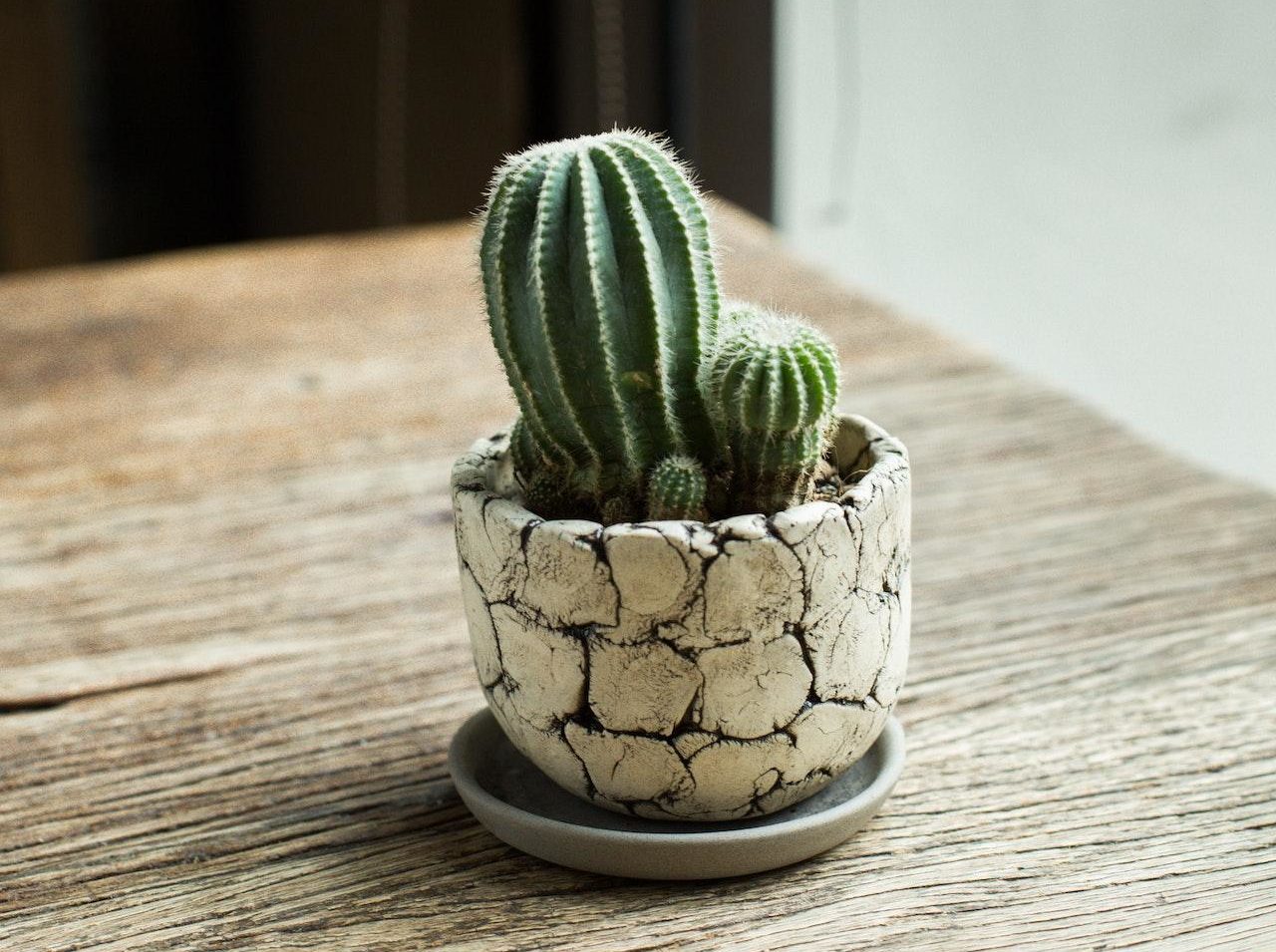
Credit: Pexels
- Start with a small pot.
- Use a cactus mix or well-drained potting soil.
- Water your plant deeply, then allow the soil to dry out completely before watering again.
- Place your plant in a bright spot, but out of direct sunlight.
- Apply a light fertilizer during the growing season.
- Be careful not to overwater or underwater your plant.
- Watch for signs of pests or diseases and act quickly if you see any.
- Prune your plant as needed to shape it or remove damaged leaves.
- Repot your plant every few years to keep it healthy.
Bonus Tips
- Place the spiky indoor house plant in a bright spot near a window.
- Water the plant when the soil feels dry to the touch.
- Fertilize the plant once a month with a half-strength liquid fertilizer.
- Prune the plant as needed to keep it looking tidy.
- Dust the leaves of the plant regularly with a soft, dry cloth.
Frequently Asked Questions
-
What are some of the most common spiky indoor plants?
Some of the most common spiky indoor plants are cacti, aloe vera, and snake plants.
-
What are some of the benefits of having a spiky indoor plant?
Some benefits of having a spiky indoor plant include that they are low maintenance can help purify the air, and can add a unique touch to your home decor.
-
Are there any care tips I should know about before getting a spiky indoor plant?
Yes! There are a few care tips you should know about before getting a spiky indoor plant. First, make sure you choose a spot in your home that has bright, indirect sunlight. Secondly, water your plant regularly, but don’t overdo it and always allow the soil to dry out in between waterings. Lastly, fertilize your plant every few months to help it stay healthy and strong.
-
I’ve heard that aloe vera can be used for medicinal purposes. Is this true?
Yes, it’s true! Aloe vera has a long history of being used for medicinal purposes. The gel inside the aloe vera leaves can be used to soothe burns, cuts, and other skin irritations.
-
I’m interested in getting a snake plant. What are some of the benefits?
Snake plants are a great option for those looking for a hardy, low-maintenance plant. Some of the benefits of snake plants include that they are very tolerant of neglect, can help purify the air, and are virtually indestructible.
-
Can spiky indoor plants be toxic to pets?
Yes, some spiky indoor plants can be toxic to pets if they are ingested. If you are concerned about your pet getting into your plants, opt for a non-toxic variety such as snake plants or aloe vera.
Conclusion
In conclusion, if you’re looking for a resilient spiky indoor house plant that will survive even the harshest conditions, any of the 9 plants on our list would be a great choice. With their ability to thrive in low-light and low-water conditions, they are perfect for busy people who don’t have a lot of time to care for their plants.
So if you’re looking for a plant that is low-maintenance and can withstand just about anything, one of these 9 plants will be a good fit for you.
Michelle Wilde
Related posts
![]()
About Michelle Wilde
Michelle Wilde is a stay-at-home mom and avid plant lover. Armed with a post-graduate degree in Computer Science (no kidding!), she loves researching plants and landscapes. When she is not caring for her 4 kids, she spends time on her passion for plants. She blogs at www.indoorplantschannel.com, the trusted source for indoor plants.
Learn more
Subscribe
* You will receive the latest posts and updates about indoor plants!
Search
Recent Posts
Categories
- Beginner Guides (10)
- FAQ (206)
- General (2)
- How-To Guides (212)
- Indoor Plants (214)
- Pest Management (2)
- Plant Problem Solutions (4)
- Seasonal Growing (2)
- Specialized Environments (2)
- Specific Plant Care (3)
- Technical Growing (2)
